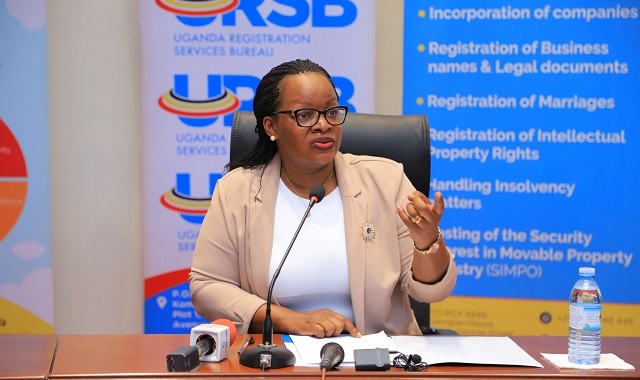
Kampala, Uganda | THE INDEPENDENT | The Uganda Registration Services Bureau has explained that the ongoing deregistration of companies targets several areas of compliance on top of failure to file annual returns.
Last month, a notice from URSB stated that a total of 186,000 companies had been struck off the register because they had not filed returns for more than five years.
Earlier in July, another 875 had been reported de-registered by the agency over the same reasons after failing to explain why they should not file a solvency statement and be as per Section 134(6) of the Companies Act 2012.
Speaking at the Stanbic Business Incubator Masterclass on company registration and compliance, one entrepreneur identifying himself as Deogratius said one of his companies had been de-registered before it even neared the fifth anniversary.
Another list of 110,822 companies was issued on the URSB website on August 30, as having been struck off the register.
Some of the companies were registered as far back as 40 years ago and others last filed returns immediately after registration, while there are those that are relatively younger, less than five years.
Rachel Kamusiime, the Registration Officer at URSB says some companies made returns that did not include all issues, like the recently introduced Beneficial Ownership (the real owner of the company) requirement.
URSB also admitted that there were challenges with their ongoing digitalization process, which have left some businesspeople frustrated.
The government’s agency has over the last few years been automating its services including business registration, and filing of returns, among others as part of the government’s move to digitize all operations by 2040.
Speaking at the Stanbic Business Incubator Masterclass on company registration and compliance, several entrepreneurs voiced concerns about the failure of the automated system in different areas.
The event was aimed at providing insights and guidance on critical topics in business registration and compliance.
One participant identified as Deogratius wondered why the URSB automation system cannot provide a comprehensive “self-service” system where things like changes on personal codes or email addresses do not require one to go to the offices or write application letters.
At the same event, one Monalisa expressed frustration that the digitization journey had made the registration and other services at URSB harder despite the reasons that the move was aimed at making registration services seamless.
She said, for example, that for three months she had been trying to rectify a few details on her companies’ profiles, companies which had been created using the same digital or online registration service.
She wonders while she still has to move up and down between the different registration offices and write letters, all in vain, and still be unable to have the issues rectified.
She also claimed that one of her companies is registered in the same name as another company and efforts to have the issue rectified have failed.
According to the policies and URSB’s operations, an entrepreneur is required to search for any similarity between the proposed name and any other name already reserved or registered.
The URSB system is also supposed to reject any name that is similar to an already registered one, and Monalisa wonders how her company has a namesake and URSB has failed to resolve the matter. She also questioned the requirement of a postal address when all processes are digitized.
In response, Kamusiime said digitization was a process and that this would continue improving with time, as per the government’s vision for 2040.
She also apologized for the frustrations that customers get with the personnel but added that they are working to improve the system which was only started six months ago.
The master class was aimed at sensitizing about the importance of identifying and documenting beneficial owners within one’s business structure and to help gain insights into the regulatory requirements and best practices for compliance.
It also aimed at showcasing the latest changes and enhancements in the URSB systems update and how these updates can streamline registration and compliance processes for greater efficiency.
*****
URN


